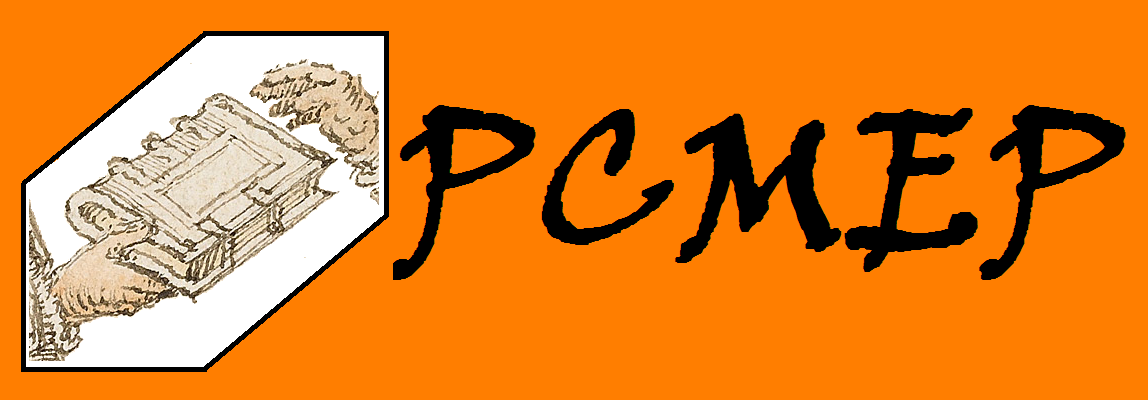The Parsed Corpus of
Middle English Poetry (PCMEP)
PCMEP Text Information
Wynnere and Wastoure
Back to PCMEP texts
About the text:
About the edition and manuscript base:
About the file:
Other:
| Text name: | Wynnere and Wastoure |
| Alternative names: | Sithen that Britain was bigged and Brutus it ought; Winner and Waster; A Tretys and God Schorte Refreyte by-twixe Wynnere and Wastoure |
| Content: | The poet of Wynner and Wastoure falls asleep under a tree and has a dream vision. He sees two splendid armies ready to engage in battle. One is led by Wynnere, who represents financial thrift and savings; the other is led by Wastoure, who symbolizes spending and enjoyment. The two allegorical characters come to the king, who has been identified as Edward III of England (reigned 1327-1377), and start debating each other. At the end, the King gives his verdict, which remains incomplete as the poem breaks off abruptly at line 503. The poem is a composite of various typical medieval elements: dream vision, allegory, political satire and poetic debate. It is the earliest datable instance of the alliterative revival movement of the second half of the fourteenth century. Its comments on questions of labour, prices, wages, dress, food and thrift make it an important source for contemporary views on the feudal economy. |
| Genre/subjects: | allegory, dream vision, debate, complaint and satire, national policy, economy, army |
| Dialect of original composition: | Northern, perhaps mixed The predominant dialect of the original is likely Northern Midlands (Trigg 1990: xviii-xxi). However, the poet of the original was familiar with Northern as well as London forms, which could suggest that he was quite mobile (Trigg 1990: xxii). |
| Date of original composition: | 1351-1370 1351 seems to be the earliest possible date of composition since the 'Statue of Treason', probably alluded to in lines 126-33, was passed that year. 1370 can be regarded as the latest possible date of composition since the poem elaborates on political conditions under Sir William de Sharesbull, Chief Justice of the King's Bench, mentioned in the poem in line 317, who died that year (Ginsberg 1992: introduction). For a general discussion, see Trigg (1990: xxii-xxvii). The online version of the Middle English Dictionary dates the original as ?a1370. |
| Suggested date: | 1360 |
| PCMEP period: | 3 (1350-1420) |
| Versification: | alliteration, alliterating stress is most commonly aa/ax |
| Index of ME Verse: | 3137 (IMEV), 3137 (NIMEV) |
| Digital Index of ME Verse: | 4918 |
| Wells: | 4.50 |
| MEC HyperBibliography: | Wynnere & W. |
About the edition and manuscript base:
| Edition: | Trigg, Stephanie. 1990. Wynnere and Wastoure. EETS o.s. 297. Oxford: Oxford University Press. 3-16. |
| Manuscript used for edition: | London, British Library Addit. 31042 [London Thornton Manuscript], ff. 176v-181v |
| Online manuscript description: | British Library: Archives and Manuscripts Descriptions |
| Manuscript dialect: | Northern The manuscript language has been fitted to "somewhere not very far from where the counties of Yorkshire, Lincolnshire and Nottinghamshire meet," (McIntosh 1962). The copyist of the manuscript, Robert Thornton, was a Northerner and may sometimes have introduced his own distinctive forms (Ginsberg 1992: introduction). |
| Manuscript date: | s. xv-med The online version of the Middle English Dictionary lists the manuscript date as c1450. |
About the file:
| File name: | M3.WinnerWaster |
| ID: | WinnerWaster,w.x.y.z: w=token, x= page, y=line, z=fitt {Intro, Fitt1-3} |
| Word count: | 4,743 |
| Token count: | 293 |
| Line count: | 503 |
Other:
| General notes: | The poem is fragmentary and ends imperfectly in line 503. The text survives in a single manuscript witness, the London Thornton Manuscript. It was compiled by Yorkshire gentryman Robert Thornton around 1450. It contains a collection of spiritual texts. (Trigg 1990: introduction, McIntosh et al. 1986: 101, Fein 1989). The poem is divided into an introduction and three fitts, as indicated in the IDs. |
| Remarks on parses: | The line breaks in the electronic text file follow Trigg (1990: 1-16). Trigg's edition indicates emendations of words in square brackets. These corrections are indicated as comment CODEs in the parsed file. Some of the sentences reach a high level of syntactic complexity, but by and large the parses are unproblematic. |
References
Fein, Susanna G. 1989. 'Haue Mercy of Me (Psalm 51): An Unedited Alliterative Poem from the London Thornton Manuscript.' Modern Philology 86.3. 223–41.
Ginsberg, Warren. 1992. Wynnere and Wastoure and the Parlement of the Thre Ages. Kalamazoo, Michigan: Medieval Institute Publications. (available online)
McIntosh, Angus, Samuels, Michael L. & Benskin, Michael. 1986. A Linguistic Atlas of Late Medieval English. Aberdeen: Aberdeen University Press.
McIntosh, Angus. 1962. 'The Textual Transmission of the Alliterative Morte Arthure.' In: Davis, Norman & Wrenn, Charles, L. (eds.) English and Medieval Studies Presented to J. R. R. Tolkien. London: Allen and Unwin. 231-40.
Trigg, Stephanie. 1990. Wynnere and Wastoure. EETS o.s. 297. Oxford: Oxford University Press.
